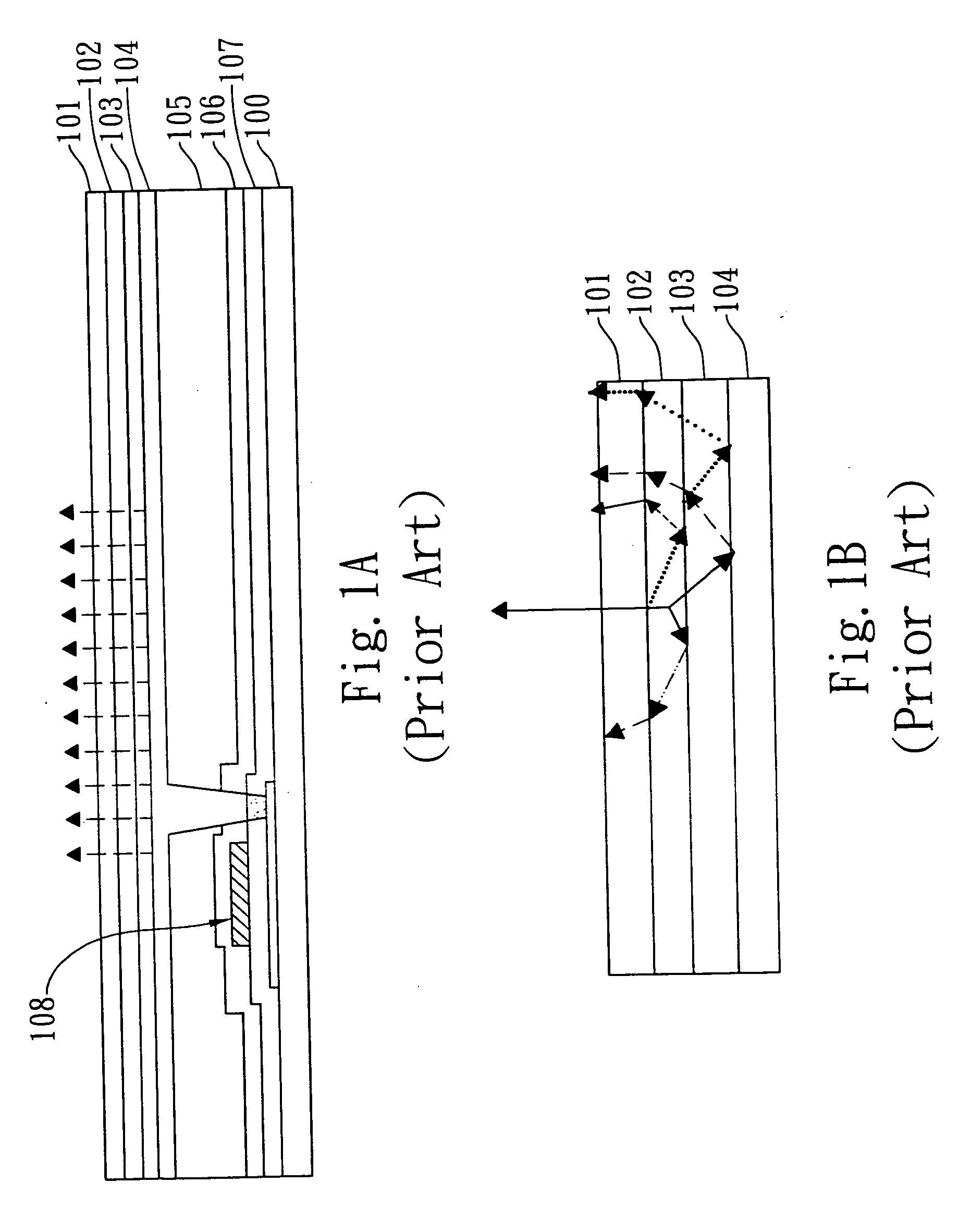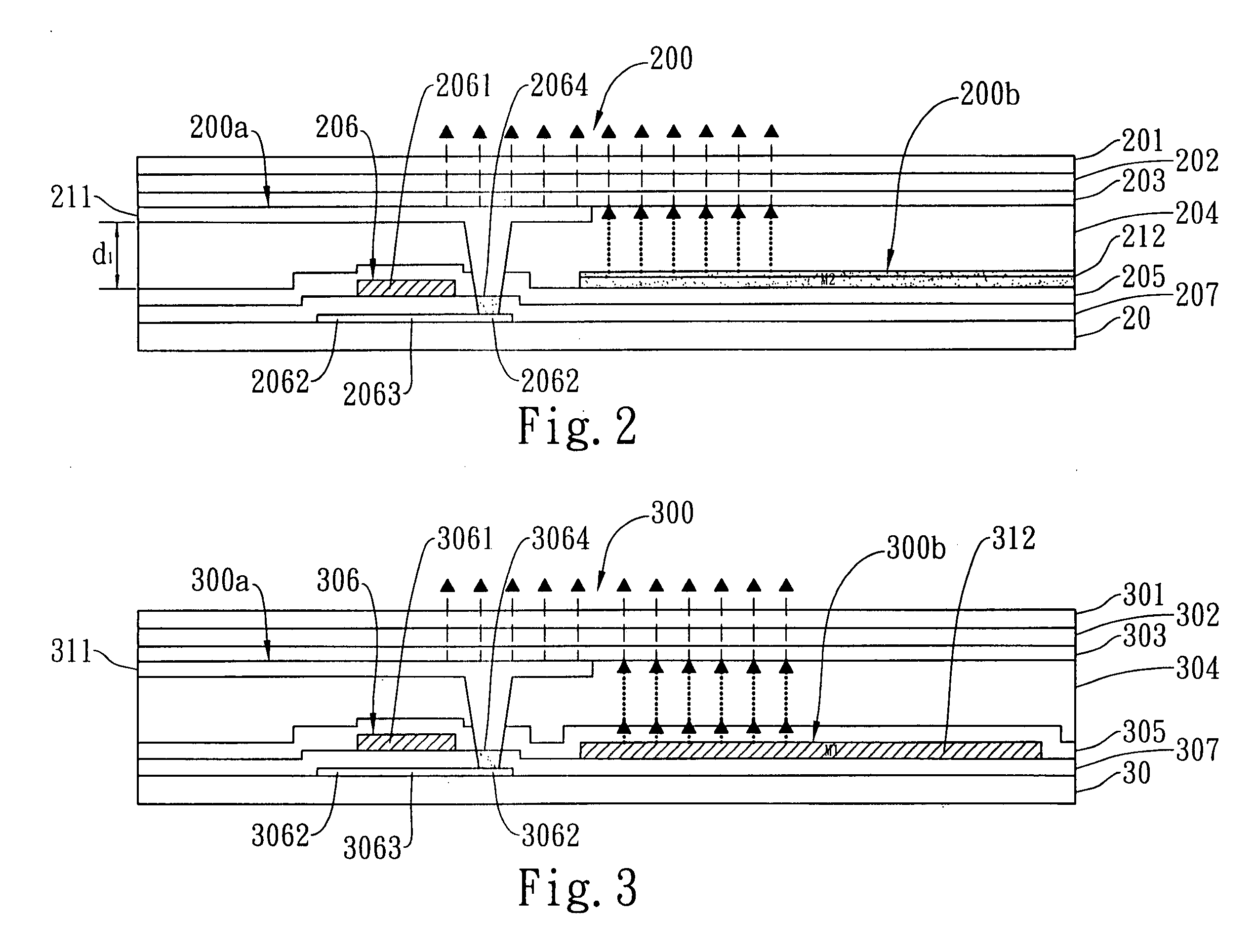Top-emission active matrix electroluminecient device
- Summary
- Abstract
- Description
- Claims
- Application Information
AI Technical Summary
Benefits of technology
Problems solved by technology
Method used
Image
Examples
first embodiment
[0019]In the first embodiment, part of the light from the electroluminecient layer 202 emits toward the first reflective layer region 200a and the second reflective layer region 200b, through both of which the part of the light is reflected and returns to the region between the first conductive electrode layer 201 and the second conductive electrode layer 203. Then, said part of the light may be emitted directly out of the top of the electroluminecient device 200; otherwise, it may be emitted out of the top of the electroluminecient device 200 after a micro-cavity effect occurs within the region between the first conductive electrode layer 201 and the second conductive electrode layer 203. As shown in FIG. 2, the optical path length of the light reflected from the first reflective layer region 200a is different from that of the light reflected from the second reflective layer region 200b. Consequently, when the light reflected respectively from the first reflective layer region 200a...
second embodiment
[0022]In the second embodiment, part of the light from the electroluminecient layer 302 emits toward the first reflective layer region 300a and the second reflective layer region 300b, through both of which the part of the light is reflected and returns to the region between the first conductive electrode layer 301 and the second conductive electrode layer 303. Then, the part of the light may be emitted directly out of the top of the electroluminecient device 300; otherwise, it may be emitted out of the top of the electroluminecient device 300 after a micro-cavity effect occurs within the region between the first conductive electrode layer 301 and the second conductive electrode layer 303. As shown in FIG. 3, the light reflected from the first reflective layer region 300a has an optical path length different from that of the light reflected from the second reflective layer region 300b. Consequently, when the light reflected respectively from the first reflective layer region 300a an...
third embodiment
[0025]In the third embodiment, part of the light from the electroluminecient layer 402 emits toward the first reflective layer region 400a, the second reflective layer region 400b and the third reflective layer region 400c, through all of which the part of the light is reflected and returns to the region between the first conductive electrode layer 401 and the second conductive electrode layer 403. Then, the part of the light may be emitted directly out of the top of the electroluminecient device 400; otherwise, it may be emitted out of the top of the electroluminecient device 400 after a micro-cavity effect occurs within the region between the first conductive electrode layer 401 and the second conductive electrode layer 403. As shown in FIG. 4, the light reflected from the first reflective layer region 400a has an optical path length different from that of the light reflected from the second reflective layer region 400b and different from that of the light reflected from the third...
PUM
 Login to View More
Login to View More Abstract
Description
Claims
Application Information
 Login to View More
Login to View More - R&D
- Intellectual Property
- Life Sciences
- Materials
- Tech Scout
- Unparalleled Data Quality
- Higher Quality Content
- 60% Fewer Hallucinations
Browse by: Latest US Patents, China's latest patents, Technical Efficacy Thesaurus, Application Domain, Technology Topic, Popular Technical Reports.
© 2025 PatSnap. All rights reserved.Legal|Privacy policy|Modern Slavery Act Transparency Statement|Sitemap|About US| Contact US: help@patsnap.com



